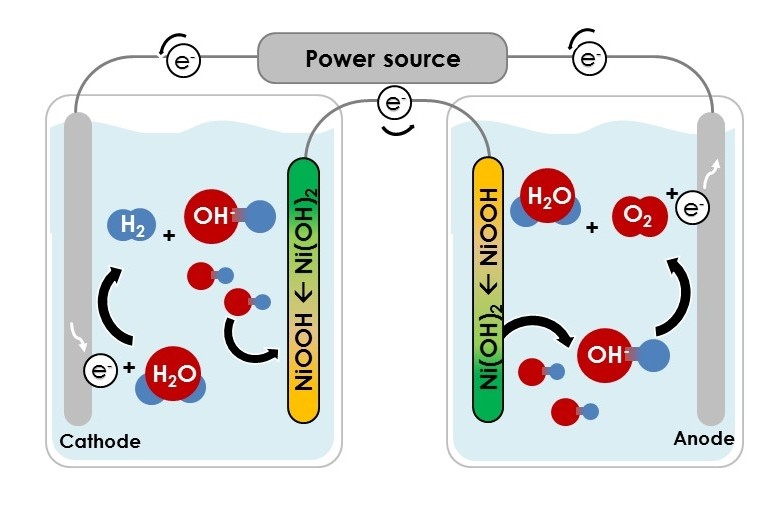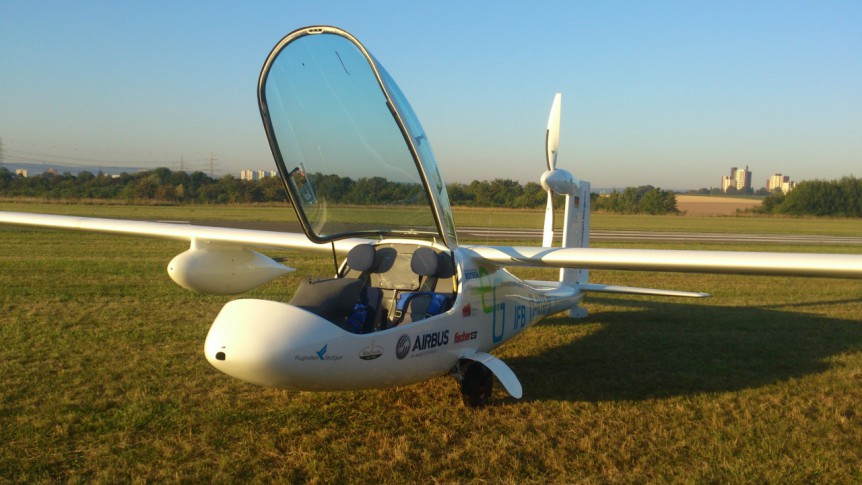Technion is an interdisciplinary technology institution based in Haifa, Israel. Two years ago, it began promoting its unique approach to splitting water to extract hydrogen. One of the researchers on the project won a three-minute thesis contest with her quick and eloquent explanation of photoelectric chemical water splitting, key to the research team’s approach. Point of Sale Delivery The Jerusalem Post reported, “Technion-Israel Institute of Technology researchers have developed a new method for the production of hydrogen from water that uses solar energy in a centralized way at the point of sale, such as a gasoline station for electric cars fueled by the gas.” (Editor’s italics) The article explained, “This eliminates the need for ‘solar farms’ whose hydrogen has to be trucked a long distance, making the process cost effective, safe and efficient.” Published two years ago in Nature Materials, the study was led by Avigail Landman, a doctoral student in the Nancy & Stephen Grand Technion Energy Program and …
e-Genius Flies with a Range Extender
Stuttgart to Barcelona Dipl-Ing* Ingmar Geiß, Deputy Project Manager for e-Genius with the Institute of aeronautical engineering at Stuttgart University shared the news that e-Genius flew with its range extender for the first time on September 15. He notes that while the battery-powered airplane can manage trips up to 300 kilometers (186 miles), the hybrid engine/generator pod will enable flights up to 1,000 kilometers (620 miles). This would equal a trip from Stuttgart to Barcelona, Spain, according to the e-Genius web site. As the school explains, “With [the] e-Genius hybrid most flights of a typical user case can be done in the cost and energy efficient battery mode – for all longer flights the range extender can be used. Generator system control requires no pilot input, everything being done automatically. If the pilot wants to set down at the end of a trip with a certain amount of battery energy on board, e-Genius has an ingenious “look-ahead” feature to modulate …
PC-Aero Introduces Solar Elektra One, Solar Trailer
Dr. Birgit Weißenbach, press and marketing director for the firm, announces that PC-Aero and Calin Gologan will appear at the ILA (Internationale Luft- und Raumfahrtausstellung, or International Aerospace Exhibition) Berlin Air Show being held between September 11 and 16 at Roger Airfield, about 11 miles southeast of the city. They will be showing, for the first time, their operational Electric Flight System, comprising their electric and solar-powered Elektra One Solar aircraft and a mobile solar charging station, the trailer in which the motorglider can be transported. Dr. Weißenbach notes that “At the Aero in Friedrichshafen/Germany this year we presented only a mock-up of the Elektra One Solar (Editor’s Note: as they did at AirVenture 2011, showing only stuck on, but not connected solar cells on the shorter Elektra One wing).” The ILA will see the debut of the aircraft with greater span, higher aspect ratio, and a laminar airfoil. Calin Gologan explains, “We do not have to wait for new …
Kickstarter Kicks Off Synergy Fund-Raising Drive
John McGinnis, designer and promoter of the Synergy aircraft, had a brief twinge of regret when Kickstarter, the crowd source funding site, turned down his project for inclusion in their site. Luckily, the gloom was dispelled when friends and supporters prompted Kickstarter to change their mind. A great deal of this was brought about by the eloquent efforts of Patrick Panzera of Contact Magazine, Howard Handelman, a friend and supporter of John’s, and Brian D. Wendt, Aeropunk.com blogger. John’s press release, issued today, spells out the importance of Kickstarter’s decision. “Kalispell, MT, May 16, 2012: “Since its unveiling last year, John McGinnis’ award-winning1 Synergy aircraft project has garnered a lot of critical attention for its advanced aerodynamics, but its sexy looks and prototype flyby videos certainly don’t hurt the pitch: major fuel savings and a modern passenger experience. “Looking something like a futuristic cross between a sailplane and a fighter jet, the boldly different five-seat aircraft promises a quieter, more comfortable …
Want a Ride in Synergy?
Howard Handelman, a regular reader and observant critic of the CAFE Blog, and Patrick Panzera of Contact magazine fame, are soliciting support for an effort to help John McGinnis finish his Synergy aircraft, unfortunately unable to make its Green Flight Challenge date, but nearing the finish line, none the less. Kickstarter.com recently rejected John’s attempt to raise funds for the nearly complete aircraft, a radically new and somewhat controversial approach to obtaining high performance on relatively low power. John has shared his insights into the aerodynamics of the project and invited a lively discussion (now closed) on the Experimental Aircraft Association’s forums pages. Synergy under construction – an imposing sight The Internet has made possible fund-raising “crowd sourcing” in which interested people all over the world can contribute to enterprises they feel worthy of support. As Handelman explains, “Keep in mind that Gates, Jobs and Rutan started in the equivalent of their garages. Then remember the pre-internet crowd funding of …
A Useful Spreadsheet and GFC Handicapping Tool
For analyzing the greatest economy from an aircraft’s design, Howard Handelman, a highly-engaged reader of this blog, provides a link to his web site, which includes a downloadable spreadsheet he has devised that will give the inquiring reader hours of enjoyment. Handelman, self-described as, “just a retired IT guy,” with “weak math skills,” but a “compulsively curious” nature, has devised a tool for analyzing any airplane’s performance based on a few known variables, and which he has applied to many of the Green Flight Challenge’s aircraft. The basis for his analyses is his “triangle tool,” a wedge that can be used to help design propellers, “test [the] truth” of claimed aircraft performance, and estimate brake horsepower in real life circumstances (at least within the parameters of the triangle tool). Handelman notes that some aircraft, including those with laminar flow, will “not fit the model very well because they don’t fit the V-squared curve. Synergy won’t look anything like the model.” His findings …


